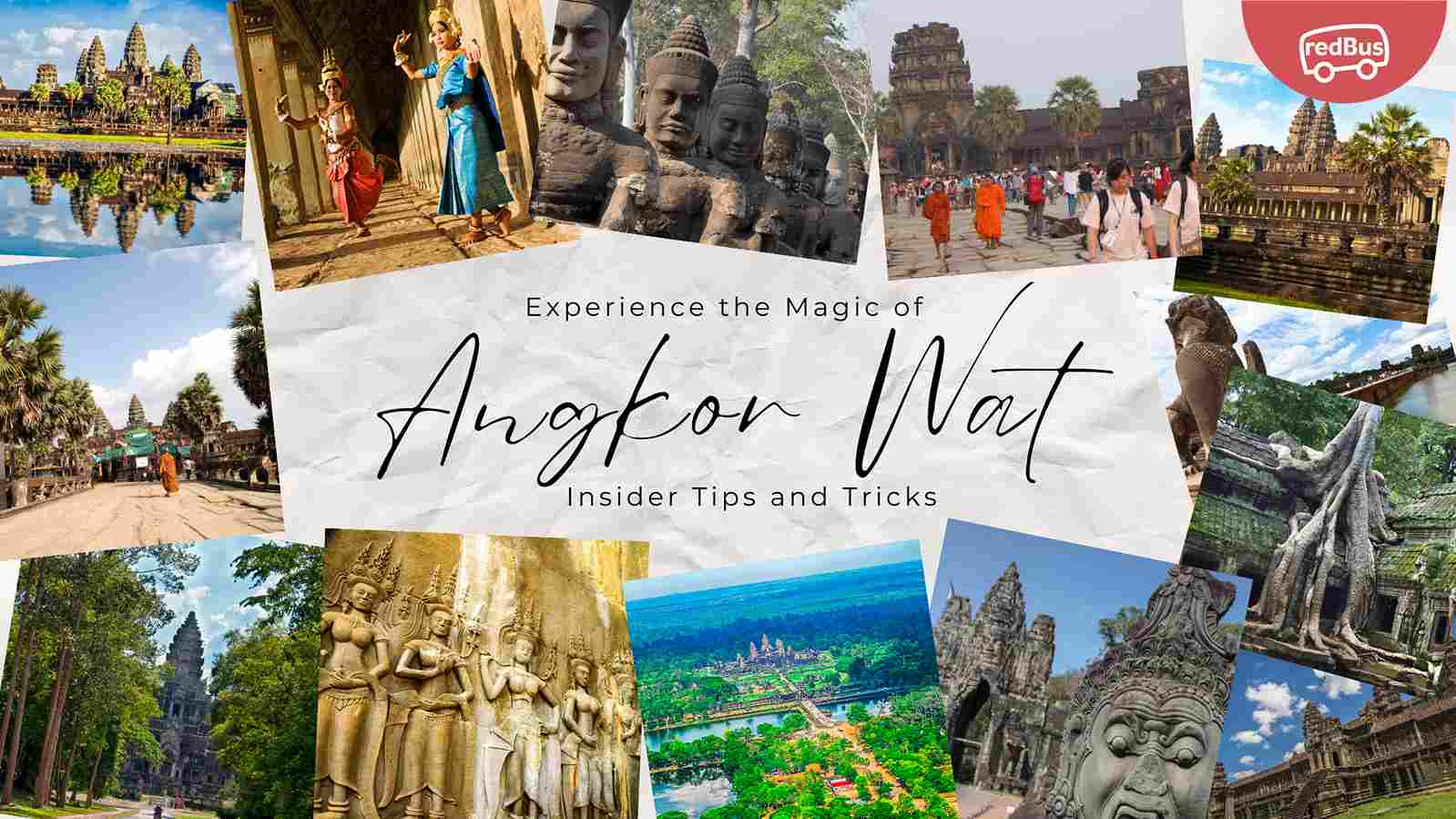The Temples of Angkor, nestled in the dense jungles of Cambodia, represent the pinnacle of Khmer architecture and culture. As one of the most significant archaeological sites in Southeast Asia, Angkor showcases the grandeur and spiritual devotion of the Khmer Empire. This guide will take you through a brief history of Angkor, a suggested travel itinerary, tips for visiting, noteworthy temples you must explore, and how to reach Angkor. Whether you’re a foreign tourist or a Cambodian citizen, Angkor promises an awe-inspiring journey through history.
A Brief History of Angkor
The Angkor Archaeological Park near Siem Reap was once the heart of the Khmer Empire, which flourished from the 9th to the 15th century. The site spans over 400 square kilometres and includes numerous temples, hydraulic structures (basins, dykes, reservoirs, canals), and communication routes. Angkor was the empire’s capital and a symbol of Khmer prosperity, culture, and power. The stunning architecture, intricate bas-reliefs, and symmetrical design symbolise the peak of Khmer classical style. The temple complex and many others in Angkor have been preserved and restored over the years, attracting millions of worldwide visitors.
According to Guinness World Records, it is considered one of the world’s largest religious structures. Angkor Wat and Angkor Thom are protected UNESCO World Heritage Sites. The city of Angkor was home to 750,000 people during the 5th century and was the capital of the Khmer Kingdom. In a year, approximately 2 Million tourists visit the temple, contributing to nearly 50% of Cambodia’s tourism industry.
Must Visit Temples of Angkor
Angkor Wat
Angkor Wat, the Capital of Temples, is a grand complex of Hindu and Buddhist temples located northwest of Cambodia, covering 162.6 hectares. The complex comprises temples, canals, reservoirs, elephant gates, pools, libraries and towers.
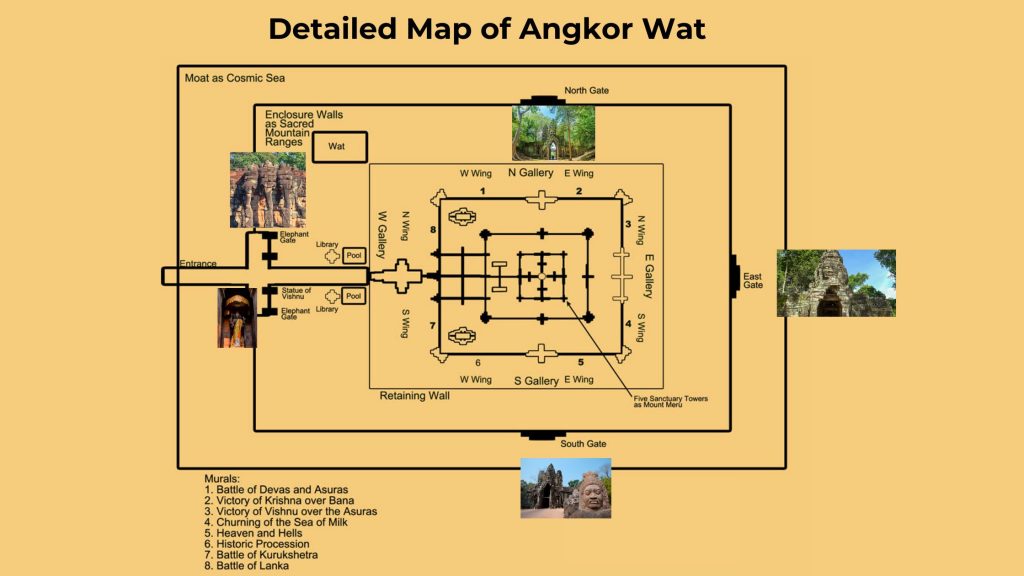
Bayon
The Bayon was the last state temple constructed in Angkor and the only temple to worship Buddhist deities. Its 216 mysterious stone faces make the temple stand out. Constructed during the late 12th and 13th centuries, it was the official state temple of the Mahayana Buddhists during King Jayavarman VII. The faces represent compassion carved into the stone towers. Its interior is a maze of halls, towers, and passages spread across three floors, giving the temple an eclectic appearance. The best time to visit and take Insta-worthy pictures is sunrise and sunset, as the sun is at a lower position and accentuates the details of the temple.
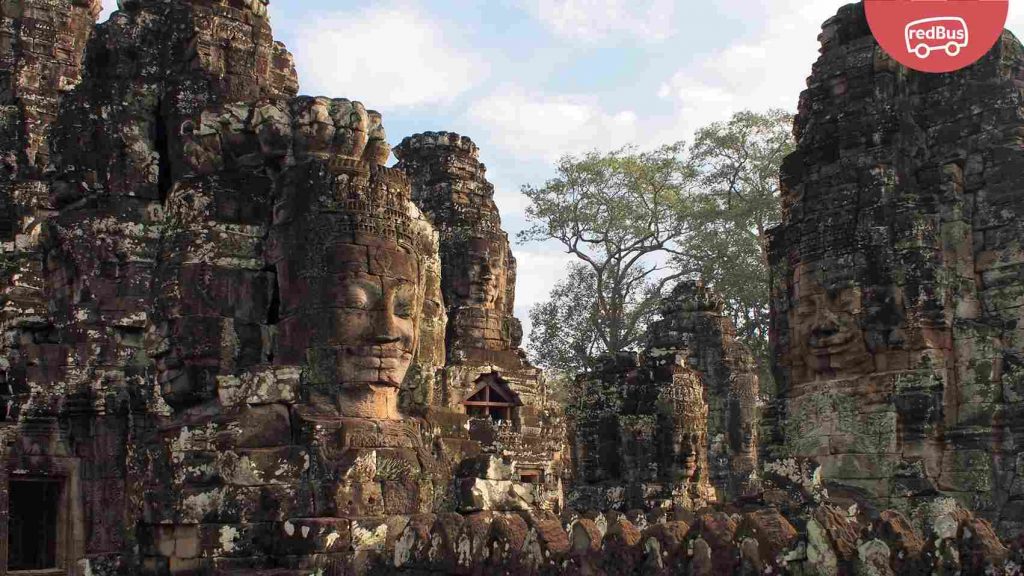
Angkor Thom
The last capital of the Khmer Empire, Angkor Thom, is a vast complex featuring several significant monuments, including the Bayon, the Baphuon, the Royal Enclosure, Phimeanakas, and the Terrace of the Elephants. According to scholars, the layout of Angkor Thom is modelled after a mandala or sacred diagram of the universe. Angkor Thom is a square city bounded on all sides by walls that rise to a height of 8 meters. The walled city is spread across 900 hectares.
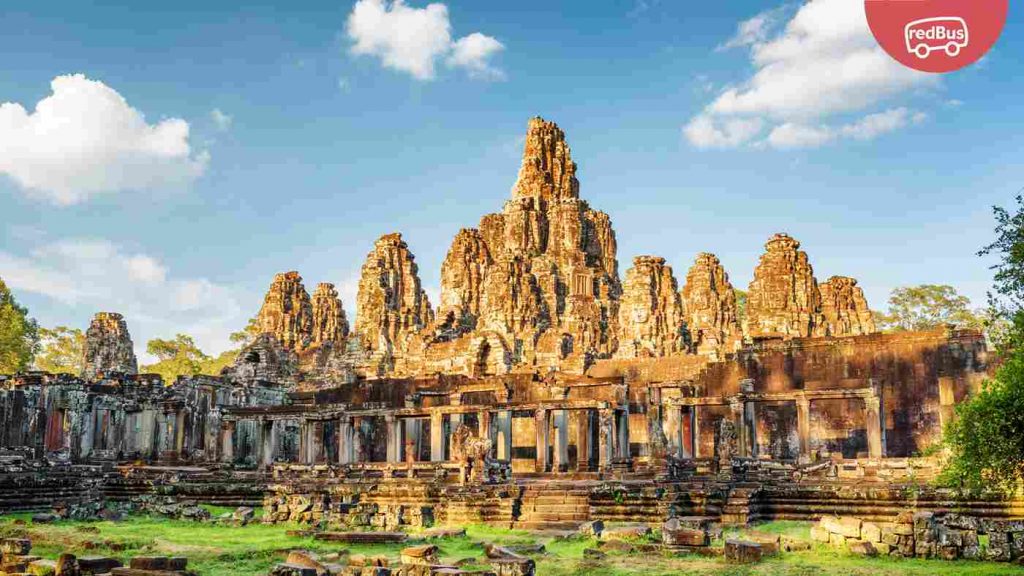
Ta Prohm
Known for its eerie, jungle-covered ruins, Ta Prohm is a photographer’s paradise. Approximately 1km east of Angkor Thom is the famous tree temple, Ta Prohm, which was made famous by the film Tomb Raider. Originally, Ta Prohm was constructed as a university and monastery for Mahayana Buddhists. Enormous trees drape their roots over old stones, creating a breathtaking contrast between nature and humanity.
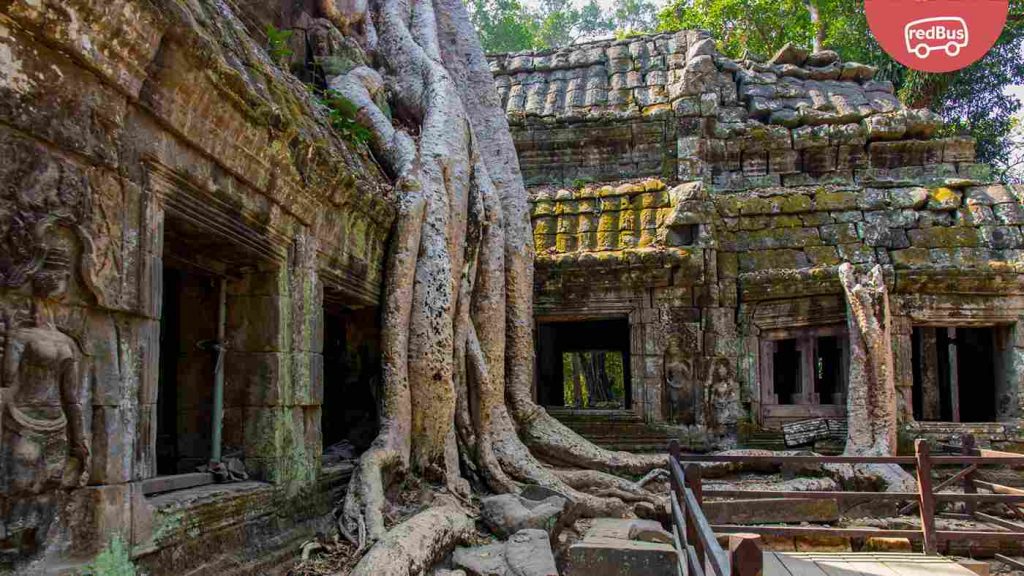
Phnom Bakheng
Sunset views are particularly popular from this hilltop temple located near Angkor Wat. Yasovarman I built the temple as the focal point of Yasodharapura, his new city, in the late ninth and early tenth century. With its tiered pyramidal structure, it is a constructed emulation of Mount Meru, the metaphysical and physical centres of dharmic faiths.
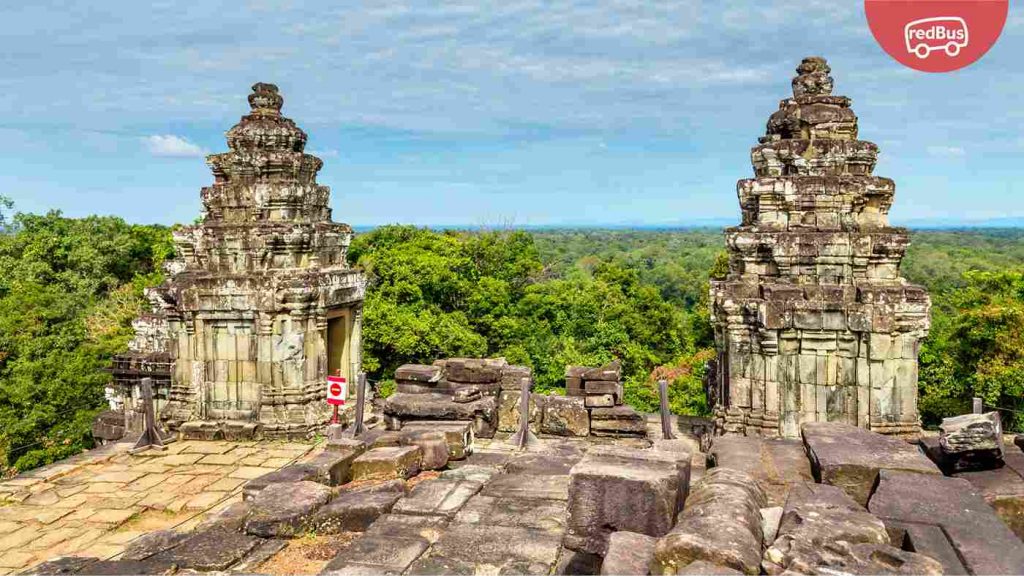
Banteay Srei
This small temple is made from pink sandstone and is well-known for its intricate carvings. The temple’s name, Banteay Srei, means “Citadel of Women,” and its decorations are considered some of the finest in Angkor.
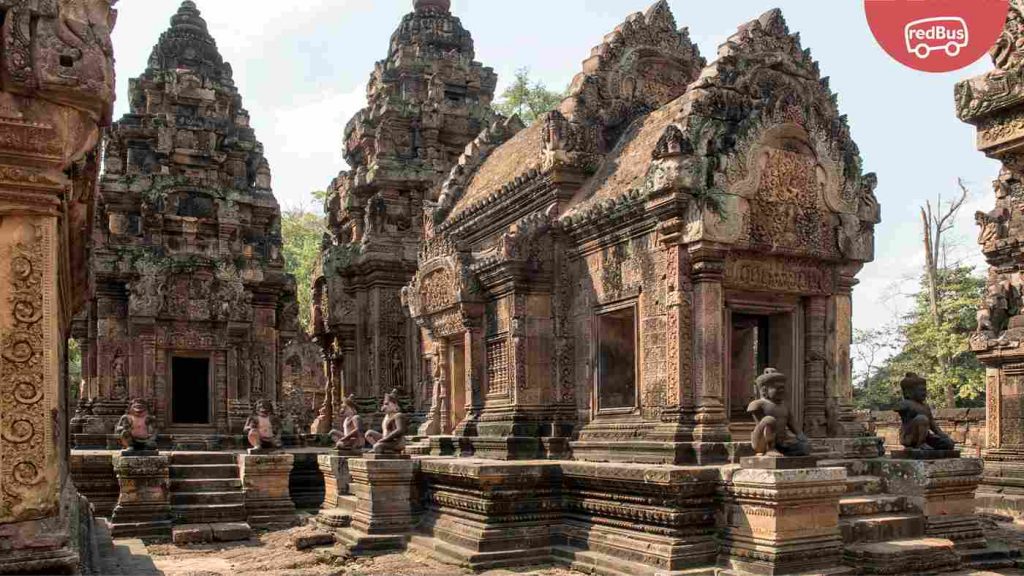
Preah Khan
This sprawling temple complex was both a religious and administrative centre. Its maze-like corridors, adorned with intricate carvings, make it a fascinating site to explore.
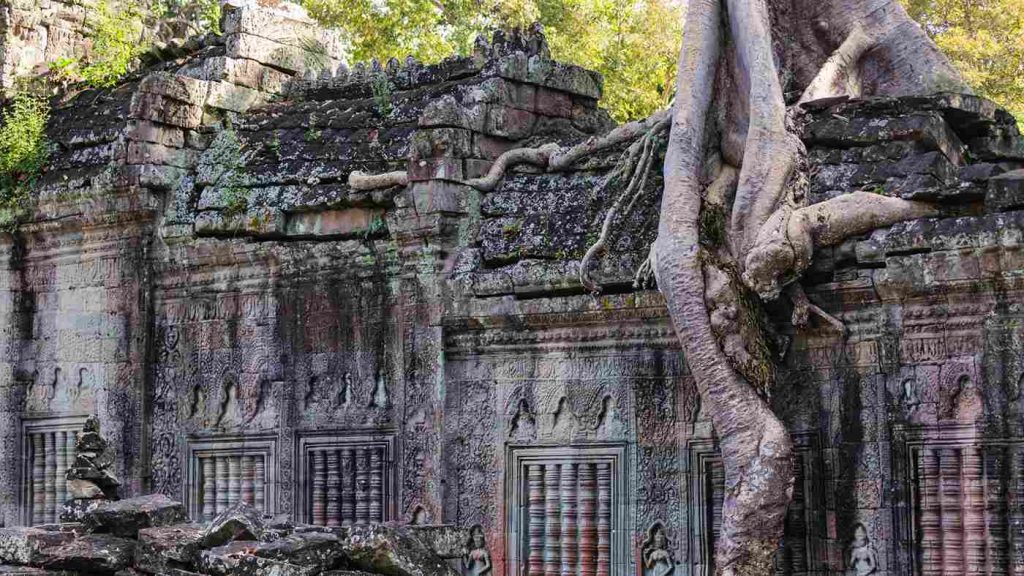
Banteay Kdei
A lesser-known temple, Banteay Kdei, offers a tranquil and less crowded experience. Its beautiful bas-reliefs and sculptures are worth a visit.
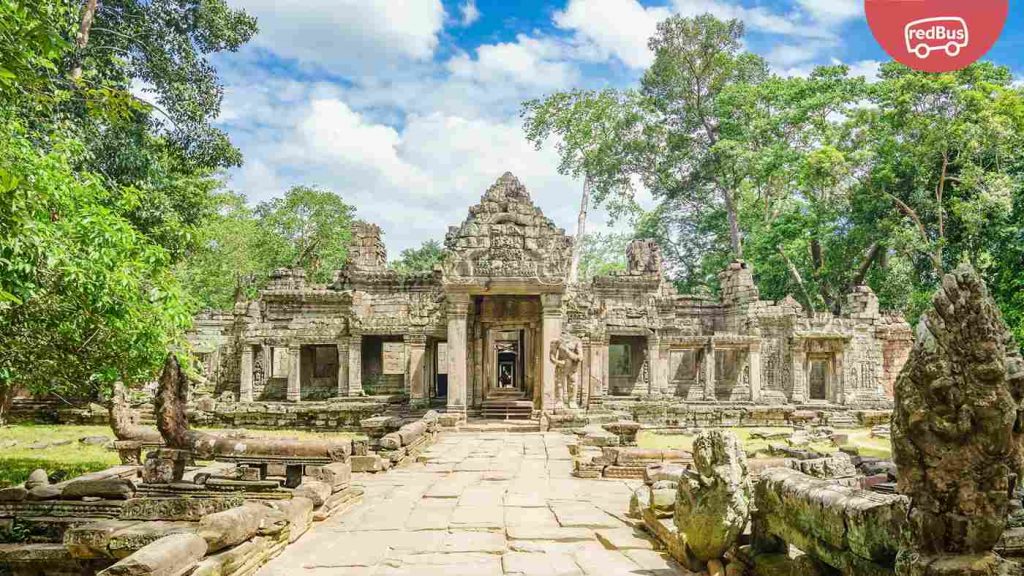
Travel Itinerary for Angkor
Day 1: Arrival in Siem Reap
- Morning: Arrive in Siem Reap and check into your hotel.
- Afternoon: Visit the Angkor National Museum to get an overview of the history and artefacts from the Angkorian period.
- Evening: Stroll through the bustling Pub Street and enjoy a traditional Khmer dinner.
Day 2: Exploring Angkor Wat and Angkor Thom
- Early Morning: At Siem Reap, tuk-tuks and taxis are readily available to take you to the Angkor Archaeological Park. Start your day with a sunrise visit to Angkor Wat. The early morning light adds a magical aura to the temple.
- Late Morning: Head to Angkor Thom, the last great capital of the Khmer Empire. Explore the Bayon Temple with its enigmatic smiling faces.
- Afternoon: Visit the Baphuon, Phimeanakas, and the Terrace of the Elephants within Angkor Thom.
- Evening: Return to Siem Reap and relax at your hotel.
Day 3: Explore Ta Prohm and Banteay Srei
- Morning: Visit Ta Prohm, the jungle temple famous for its intertwined trees and ruins. The temple’s atmosphere is both haunting and beautiful.
- Afternoon: Travel to Banteay Srei, known as the “Citadel of Women,” famed for its intricate pink sandstone carvings.
- Evening: Enjoy a traditional Apsara dance performance in Siem Reap.
Day 4: Lesser-Known Temples
- Morning: Explore Preah Khan, a large monastic complex with a unique blend of Hindu and Buddhist architecture.
- Afternoon: Visit Banteay Kdei and Sra Srang, a royal bathing pool.
- Evening: Relax at a local café or visit the Made in Cambodia Market for souvenirs.
Day 5: Departure
- Morning: If time permits, visit the floating village of Kompong Phluk on Tonle Sap Lake.
- Afternoon: Depart from Siem Reap with unforgettable memories of Angkor.
Travel Route to Siem Reap via Bus
Travelling to Angkor by bus is a convenient and affordable option. Here are some of the famous routes in Cambodia:
- From Phnom Penh: Buses run regularly from Phnom Penh to Siem Reap. The journey takes around 6 hours, and night buses are available.
- From Battambang: A bus ride from Battambang to Siem Reap takes approximately 3 hours.
A few of the famous bus operators in Cambodia are:
From Bangkok: Buses are available from Bangkok to Siem Reap via the Poipet border if you’re travelling from Thailand. The journey can take 8-10 hours, including border crossing time.
Top bus operators offering cross-broader services from Bangkok to Siem Reap are:
It is recommended that you make a bus booking online from redBus in advance to avoid last-minute delays. They also offer coupons that save up to 50% on bus tickets.
Tips and Things to Keep in Mind while visiting the temples of Angkor
- Start Early: The temples are ideal to visit early in the morning to avoid the heat and crowds.
- Dress Modestly: Respect the cultural and religious significance of the temples by covering your shoulders and knees.
- Stay Hydrated: Carry plenty of water, as the heat can be intense.
- Wear Comfortable Footwear: You’ll be doing a lot of walking and climbing.
- Purchase an Angkor Pass: This pass grants access to all temples within the park for one day, three days, or seven days.
- Be Respectful: Avoid touching the carvings and structures, and be mindful of other visitors.
Conclusion
The temples of Angkor are a testament to the architectural genius and spiritual devotion of the Khmer Empire. From the grandeur of Angkor Wat to the enigmatic faces of Bayon, each temple offers a unique glimpse into Cambodia’s rich history and culture. Now, you are ready to explore the wonders of Angkor. Whether you are a local or a tourist, the temples of Angkor are a must-visit destination that will leave you in awe of its beauty.
